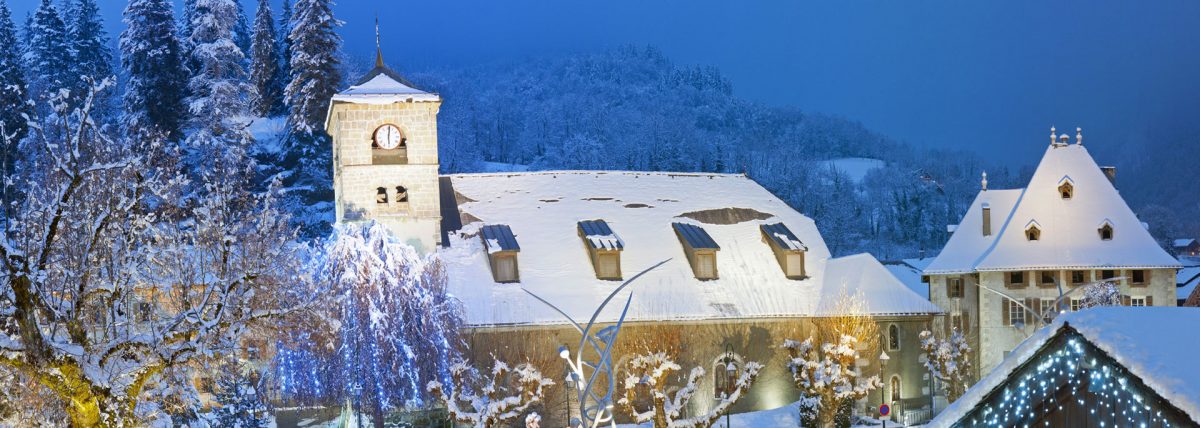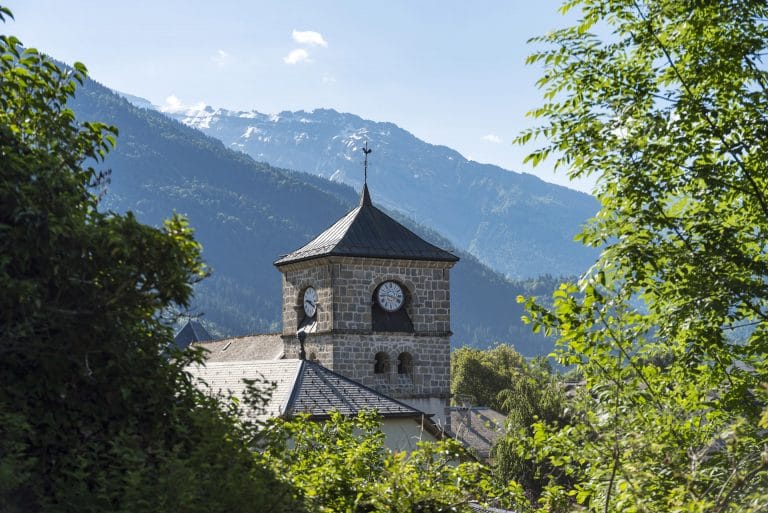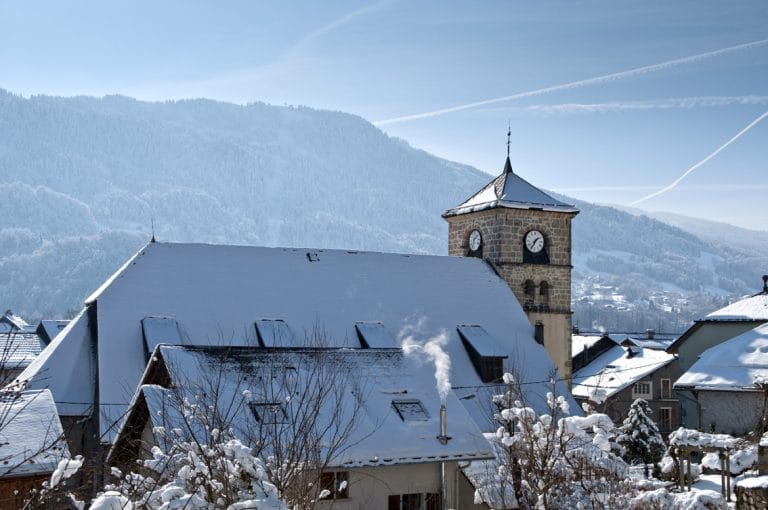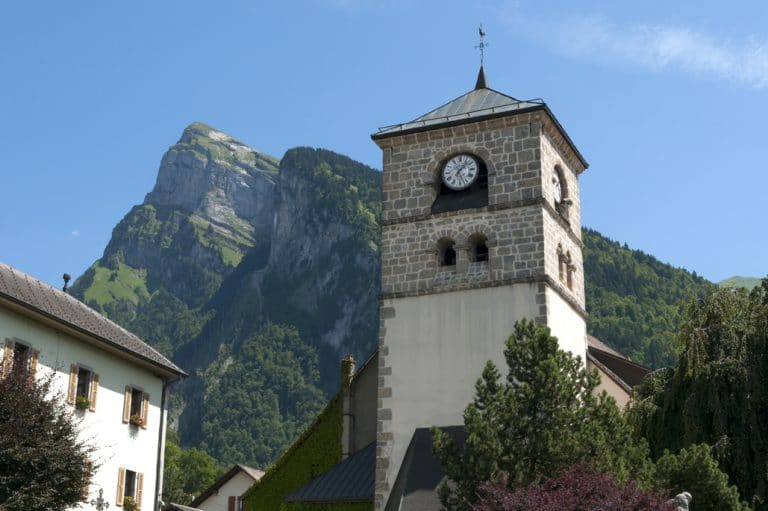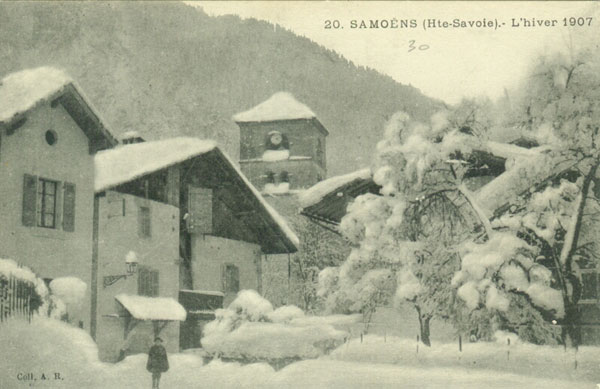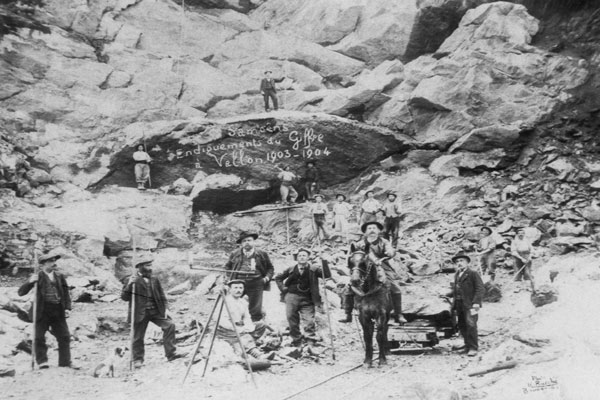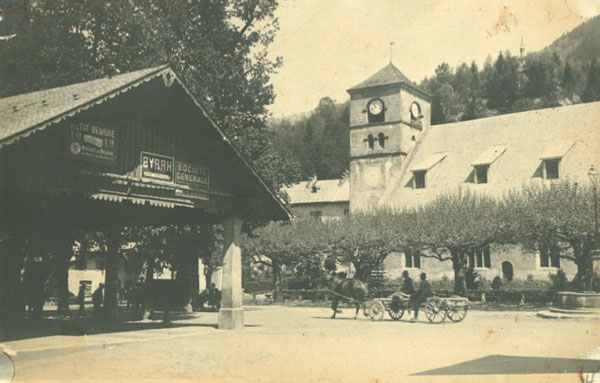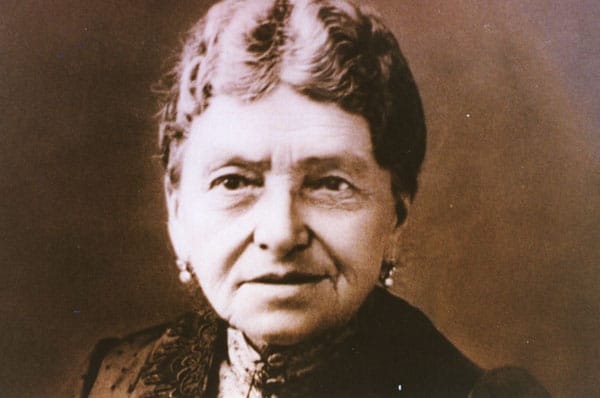Completed in 1555, the Notre-Dame de l’Assomption church in Samoëns is an architectural testimony to the work of the village’s renowned stonecutters.
The first mention of the church dates back to 1167. Former collegiate church of the Diocese of Geneva, the current church was built on the ruins of the old church destroyed in 1476 during the invasion of the Bernese. From this original church, only the lower part of the bell tower (13th century) and the chapel of Saint Claude (15th century) seem to survive. It was not until 1555 to see the completion of the construction work (porch, right aisle). Then followed the work of the choir of the religious building, completed in 1605. Then finally those of the left aisle (1621), then the sacristy (1840).
















